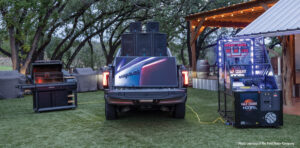When new technologies present opportunities to improve the lives of consumer-members, electric cooperatives take notice. One area that has great promise is smart home technology. This subset of the Internet of Things (IoT) is comprised of an ever-expanding selection of innovative applications and opportunities for members to use internet-enabled appliances and devices that add comfort and convenience to their daily lives.
Forbes.com defines the smart home as “a house featuring ‘intelligent’ technology that simplifies and automates everyday activities, such as turning on lights, locking the door, lowering shades––and yes, changing the settings on your thermostat. You can call any device ‘smart’ that is capable of doing something autonomously.”
Aside from being trendy and making life easier, smart home technologies can help members reduce their energy consumption. A research project that measures the capabilities of a smart home, where the intelligent devices are fully-integrated, is currently being proposed by Pacific Northwest National Laboratory (PNNL) in partnership with a group of electric cooperatives and the National Rural Electric Cooperative Association (NRECA). If the proposal is funded, electric co-ops will be at the forefront of exploring new ways to help their members save money, save energy and remain comfortable.
This study is part of a larger grid modernization effort funded by the Department of Energy. In collaboration with co-ops, PNNL is working to facilitate the connection of all smart devices through a single platform. For the greatest value to be realized, a home’s internet-connected devices need to work together to achieve common goals.
In the future, a utility-connected smart home would determine when and where it will reduce energy consumption while maximizing comfort, convenience and monetary savings. The home would recognize when the family was out of the house and could save energy through adjusting the thermostat, water heater, lights and other appliances. When the family returns, the home would recognize their arrival and adjust accordingly. The home would also recognize price signals from the utility and delay things like running the dishwasher to a time when prices are lower.
Although smart home technologies are internet-enabled, they are typically restricted to only communicate with smart devices of the same brand or manufacturer. Part of the PNNL project looks to address this issue through integration of all smart technologies through a common platform.
The full value of smart homes has yet to be realized. Through collaboration with PNNL, electric cooperatives are working to bring the potential of smart homes to their members.
As new and emerging technologies continue to reshape our energy future, electric co-ops will continue to take part in innovative research to make electricity more reliable, safe and affordable for their members.









